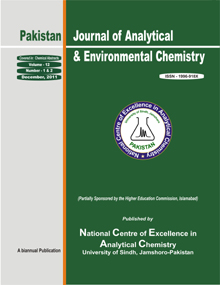Assay of Aliphatic Phthalates in Polymer Products by Sensitive Polarographic Method: Health and Environmental Issue
DOI:
https://doi.org/10.21743/Keywords:
phthalates; Differential pulse polarography; Polymer products; Comparative methodAbstract
A faster, simpler and sensitive method was developed for determination of aliphatic phthalates using differential pulse polarography (DPP) as standard technique. The choice and concentration of base electrolyte, solvent, initial potential, effect of water addition and interference by other phthalates were the main parameters to optimize for enhancement of peak current and to obtain well-defined polarogram with lower background current using 1.3 x 10-4 M di-butyl phthalate (DBP) solution. Best results were obtained in the presence of tetra methyl ammonium bromide (TMAB) as electrolyte in methanol solvent with initial potential, -1.4 V. A linear calibration plot was observed in the range of 3 x 10-7 - 1.6 x 10-4 M DBP solution as aliphatic phthalates with lower detection limit of 5.9 x 10-8 M and linear regression coefficient of 0.9987. The developed polarographic method was successfully applied for analysis of aliphtaic phthalates in various samples of locally available polymer products such as baby toys, nipples, teethers, infusion blood bags and shopping bags. The results of the current method were compared with those obtained by a reported method and good agreement was found between them.
Downloads
Downloads
Published
Issue
Section
License
Copyright (c) 2025 Pakistan Journal of Analytical & Environmental Chemistry

This work is licensed under a Creative Commons Attribution-NonCommercial-ShareAlike 4.0 International License.











